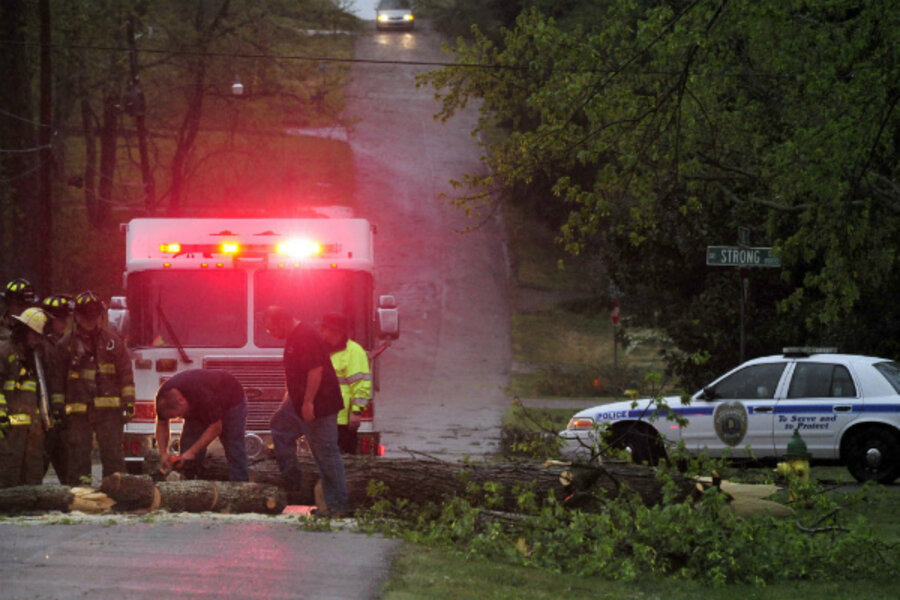Powerful spring storm heads into the Carolinas and Virginia
Loading...
Tornado watches remain in effect for parts of the Carolinas and Virginia Friday morning, as a severe spring storm makes its way east after causing extensive damage in the Midwest and Southeast and killing three people.
The storm system stretched from Texas to New York Thursday, dumping snow in the north central region of the US, and causing flooding and tornadoes in areas of Mississippi, Alabama, and Tennessee. Thousands of people are still without power in Minnesota, South Dakota, Missouri, and Arkansas after the storm swept through those states Wednesday.
Mississippi Emergency Management spokesman Greg Flynn told the Associated Press Thursday that one person died and several people were injured in Kemper County after a tornado struck the area. There have been three deaths caused by tornadoes this year in the US, which far fewer than this time last year when there were 58 tornado-related deaths, according the Weather Channel.
In general, there have been fewer tornadoes so far in 2013 than this time last year, due to cool temperatures in March, reports CNN. As the Midwest enters its peak tornado season, April to June, there is no indication that the rest of the season will be slow – or less powerful.
In Kemper County, Miss., a tornado covered a distance of 55 to 60 miles, lasting more than an hour Thursday, reported the Weather Channel.
Derek Cody, an amateur storm chaser, told the Associated Press that he drove from 13 miles from Scooba, Miss., to the small town of Shuqualak to try and get a view of the tornado. He pulled over on the highway when he saw it approaching the road.
"I kind of sat there and hoped it would cross right in front of me," Mr. Cody said. "It was just a black mass that moved across the road."
One Shuqualak resident was signing for a delivery at her front door when the deliveryman rushed her inside the house. They stayed crouched in her bathroom until the storm passed over.
"All I could hear was trees breaking and falling and glass," Kathy Coleman told the Associated Press. "He started praying and I started praying. Thank God he was here."
Mississippi Gov. Phil Bryant (R) declared a state of emergency Thursday for Kemper and Noxubee counties where the tornado flattened buildings and uprooted power lines, the Mississippi Emergency Management Agency said in a statement.
Red Cross Volunteers from Tennessee are headed to Mississippi Friday with three emergency response vehicles and supplies to help those displaced by the damage, reported NewsChannel 5 in Nashville.
Thousands of people in Missouri and Arkansas are still without power after tornadoes hit that region Wednesday. The National Weather Service reported that that an EF-2 damaged dozens of homes in the St. Louis suburb of Hazelwood. A tornado of that category generates winds of 113 to 157 m.p.h.
- Material from the Associated Press was used in this report.






